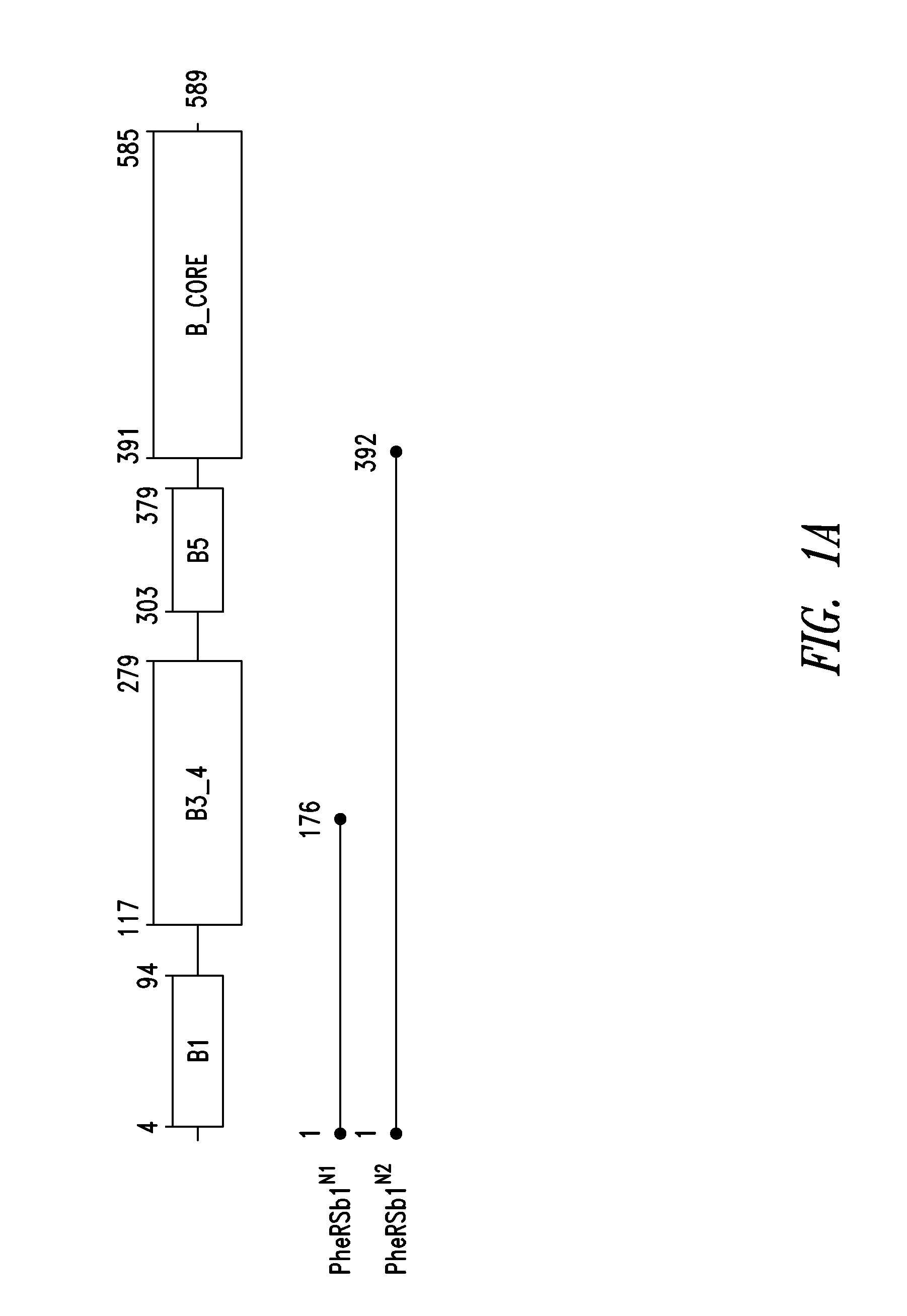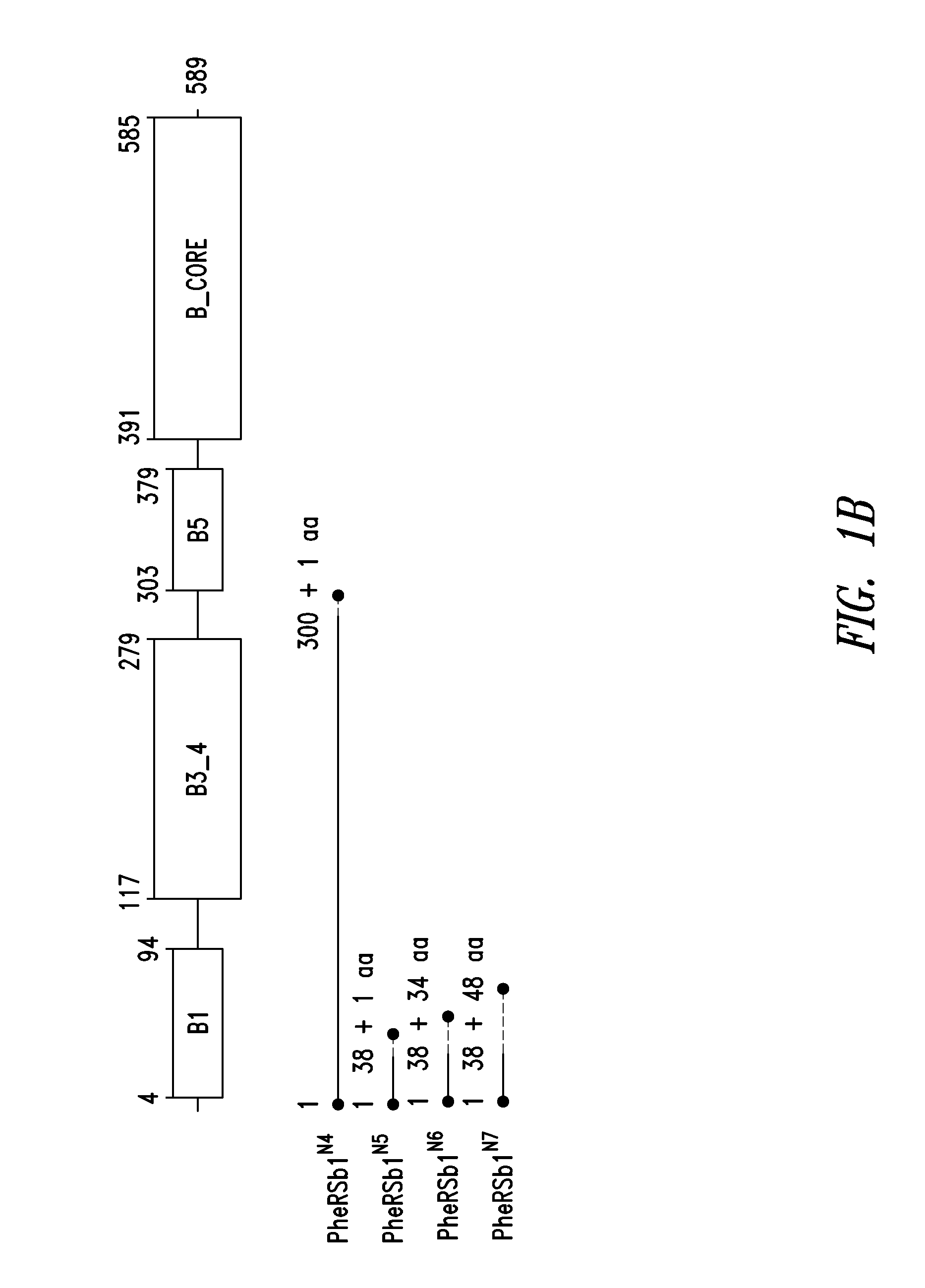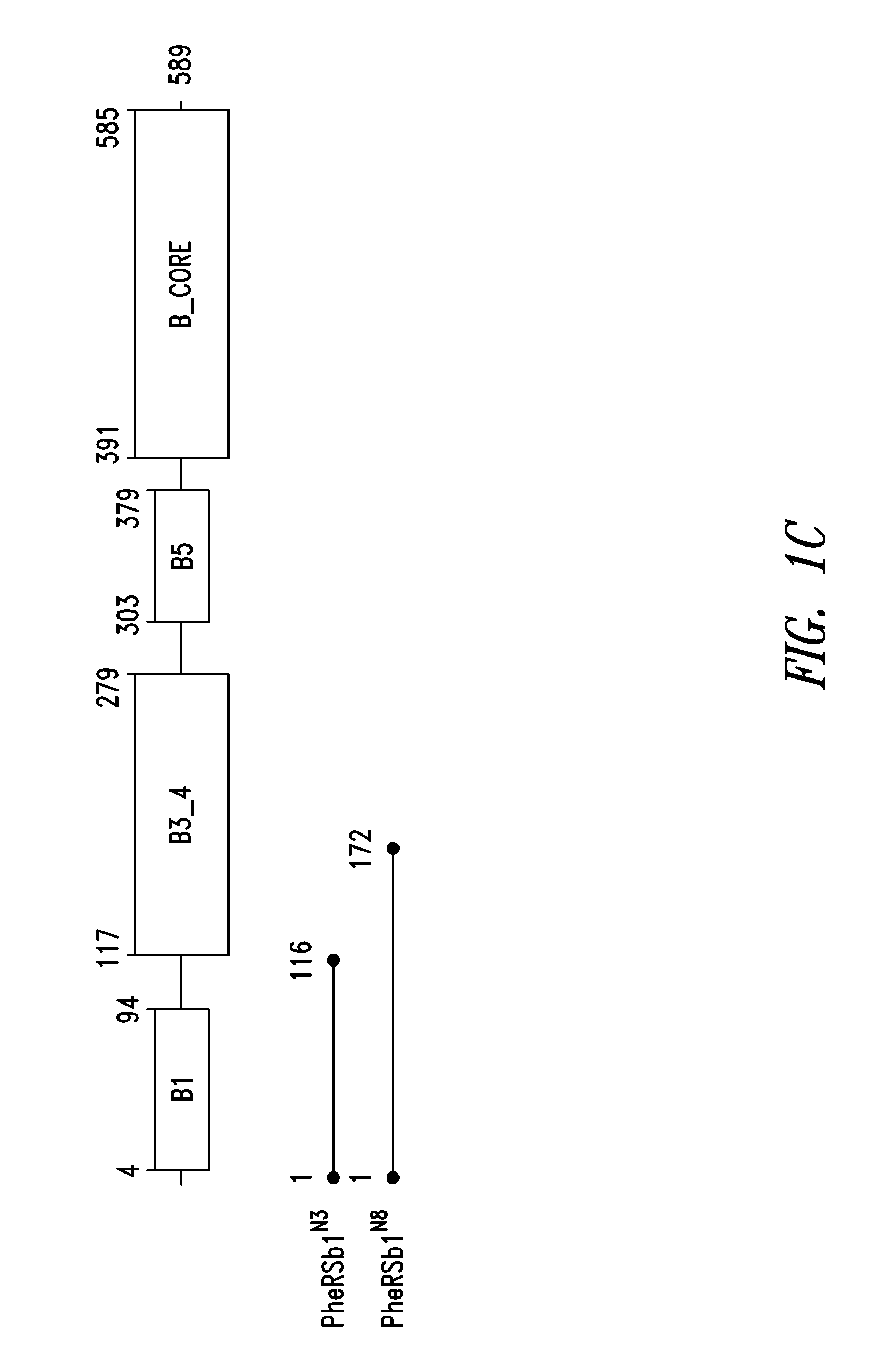Innovative discovery of therapeutic, diagnostic, and antibody compositions related to protein fragments of phenylalanyl-beta-trna synthetases
a technology of phenylalanylbeta-trna and protein fragments, which is applied in the field of discovery of therapeutic, diagnostic, and antibody compositions related to protein fragments of phenylalanylbeta-trna synthetases, can solve the problems of limited diagnostic utility, expression, isolation, purification of such fragments, etc., and achieves the ability to modulate non-canonical activity, facilitate purification of an aars
- Summary
- Abstract
- Description
- Claims
- Application Information
AI Technical Summary
Benefits of technology
Problems solved by technology
Method used
Image
Examples
example 1
Identification of Proteolytic Fragments and Products of Alternative Splicing from AARSs Using Protein Topography and Migration Analysis Platform
[0676]To identify AARS fragments from cell lines, conditioned media and tissues, samples are prepared in the following ways:
[0677]Mouse Macrophage (RAW 264.7), Cytosol and Conditioned Media:
[0678]Cells are treated with serum free DMEM media at a density of 15×106 cells / flasks. After 48 hours conditioned media and cell pellets are collected and processed. 200 μg of protein from secreted and cytosolic proteomic fractions are separated by SDS-PAGE and gel slices are prepared for analysis by mass spectrometry.
[0679]Mouse Pancreas Tissue:
[0680]The pancreas from three mice are chopped, dounce homogenized, and sonicated in PBS with protease inhibitors. Cytosolic proteome is isolated by centrifugation and 200 μg of protein is separated by SDS-PAGE and gel slices are prepared for analysis by mass spectrometry.
[0681]Mouse Liver Tissue:
[0682]Three mous...
example 2
Identification of Splice Variants Using Deep Sequencing
[0686]Splice variants of the aminoacyl tRNA synthetase are identified using high throughput sequencing of cDNA libraries enriched for aminoacyl tRNA synthetase transcripts. The cDNA templates are prepared from total RNA extracts of tissues such as human adult and fetal brains and enriched for aminoacyl tRNA synthetase transcripts by using primer sequences specific for all annotated exons of all annotated human aminoacyl tRNA synthetases and their associated proteins.
[0687]Human Total RNAs are obtained from Clontech. For cell line and mouse tissue samples, total RNAs are extracted using RNA Extract II Kit (MN). Genomic DNA is digested in the total RNA samples by DNAase I. To obtain mature messenger RNAs (mRNAs), the RNA samples are enriched twice by binding polyA+ RNA and digestion of RNA without 5′-cap by 5′-phosphate dependent exonuclease. Complementary DNA (cDNA) is synthesized from mature RNAs using primers that anneal to exo...
example 3
Identification of Aars Polypeptides Using Bioinformatics
[0690]AARS protein fragments (resectin or appendacrine peptides) are identified using bioinformatics. Amino acid sequences of the full length human aminoacyl tRNA synthetase are aligned with the full length amino acid sequence of its ortholog from the bacterium Escherichia coli using a program such as FASTA (available at the website http: / / fasta.bioch.virginia.edu / fasta_www2 / fasta_www.cgi) or the BLASTP program from the NCBI (available at the website http: / / www.ncbi.nlm.nih.gov / blast / Blast.cgi?PROGRAM=blastp&BLAST_PROGRAM S=blastp&PAGE_TYPE=BlastSearch&SHOW_DEFAULTS=on&LINK_LOC=blasthom). Resectin sequences from the human proteins are identified as sequences covering regions where there are gaps in the bacterial sequence in the alignment, or regions with low homology between the two species. The peptide, and corresponding DNA sequences in Tables 3, 6, and 9 include examples identified in this way.
PUM
| Property | Measurement | Unit |
|---|---|---|
| Mass | aaaaa | aaaaa |
| Mass | aaaaa | aaaaa |
| Mass | aaaaa | aaaaa |
Abstract
Description
Claims
Application Information
 Login to View More
Login to View More - R&D
- Intellectual Property
- Life Sciences
- Materials
- Tech Scout
- Unparalleled Data Quality
- Higher Quality Content
- 60% Fewer Hallucinations
Browse by: Latest US Patents, China's latest patents, Technical Efficacy Thesaurus, Application Domain, Technology Topic, Popular Technical Reports.
© 2025 PatSnap. All rights reserved.Legal|Privacy policy|Modern Slavery Act Transparency Statement|Sitemap|About US| Contact US: help@patsnap.com



